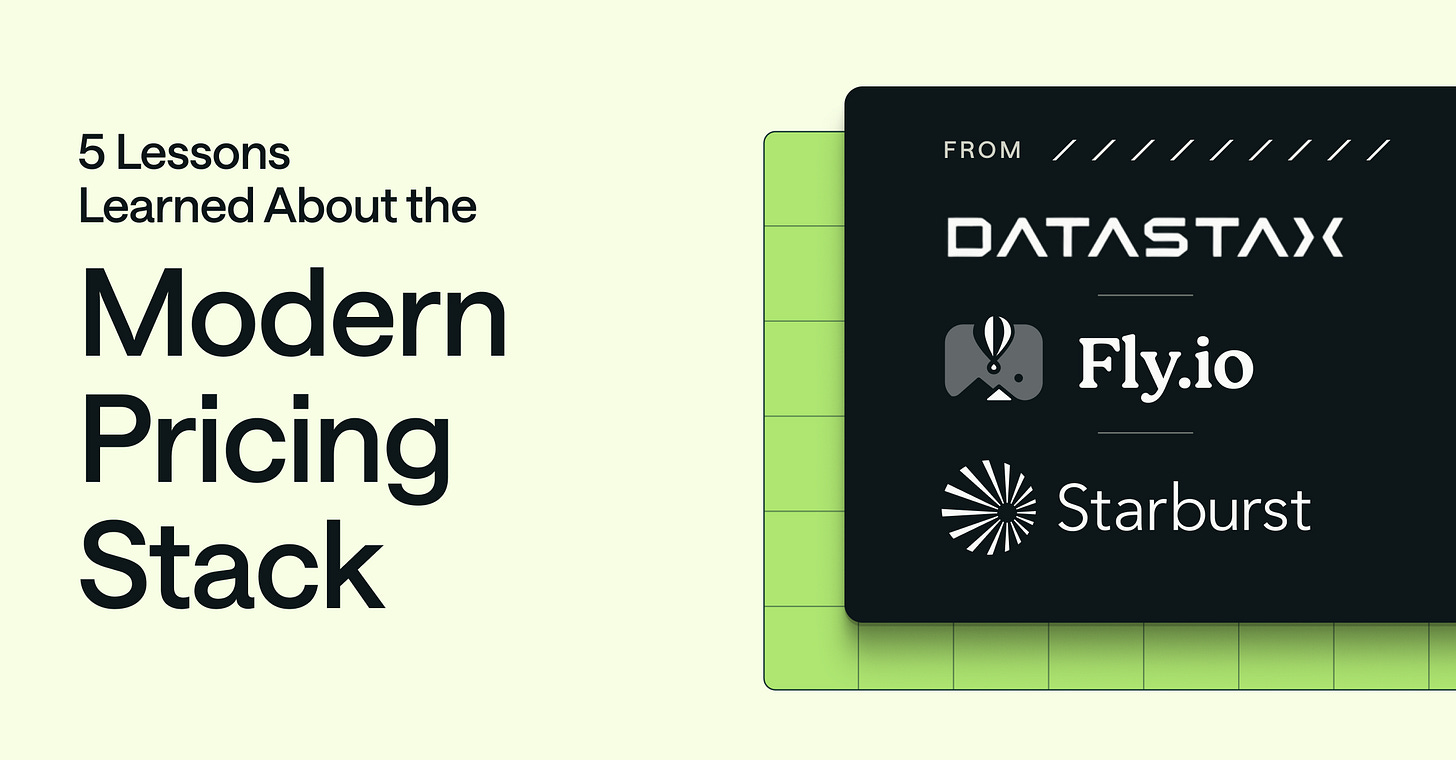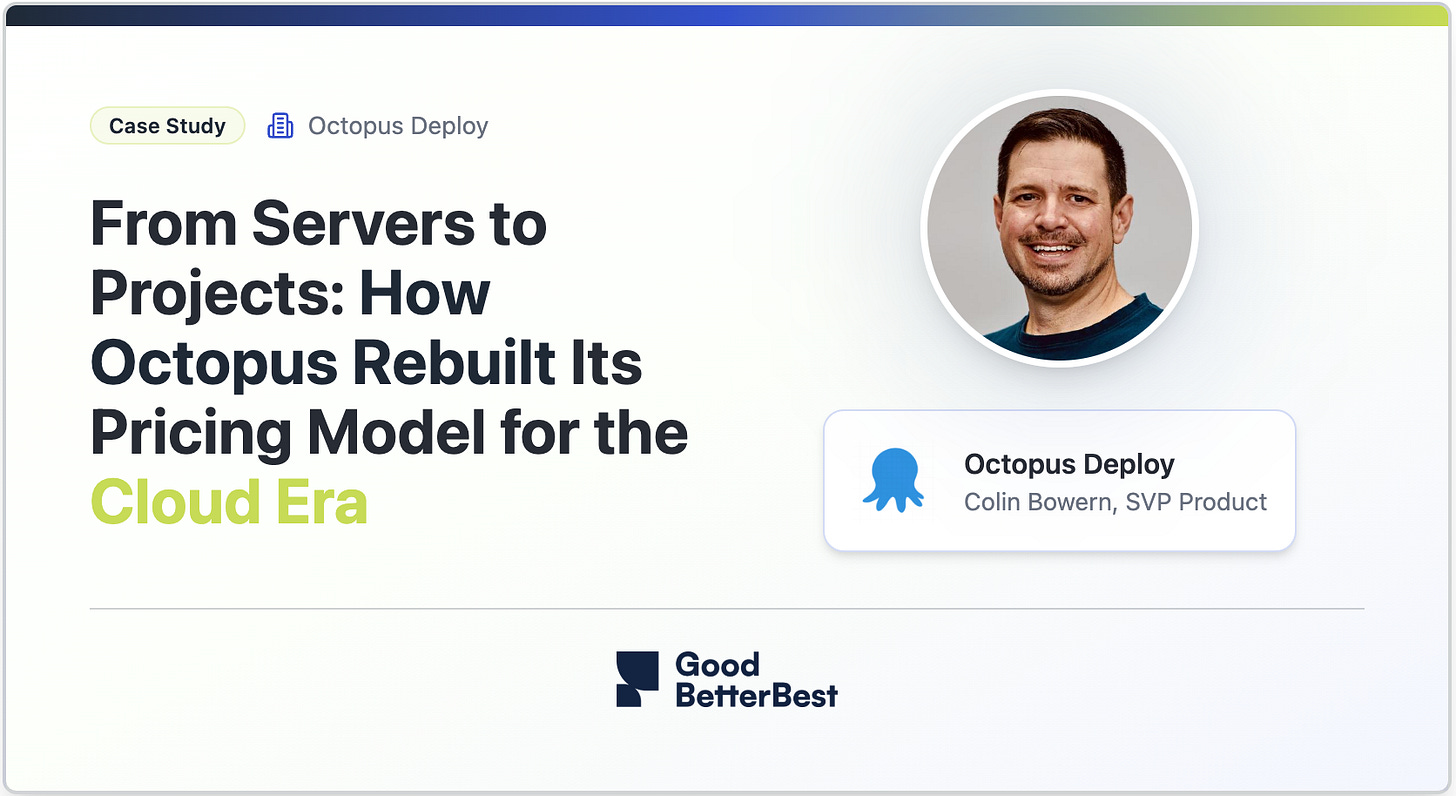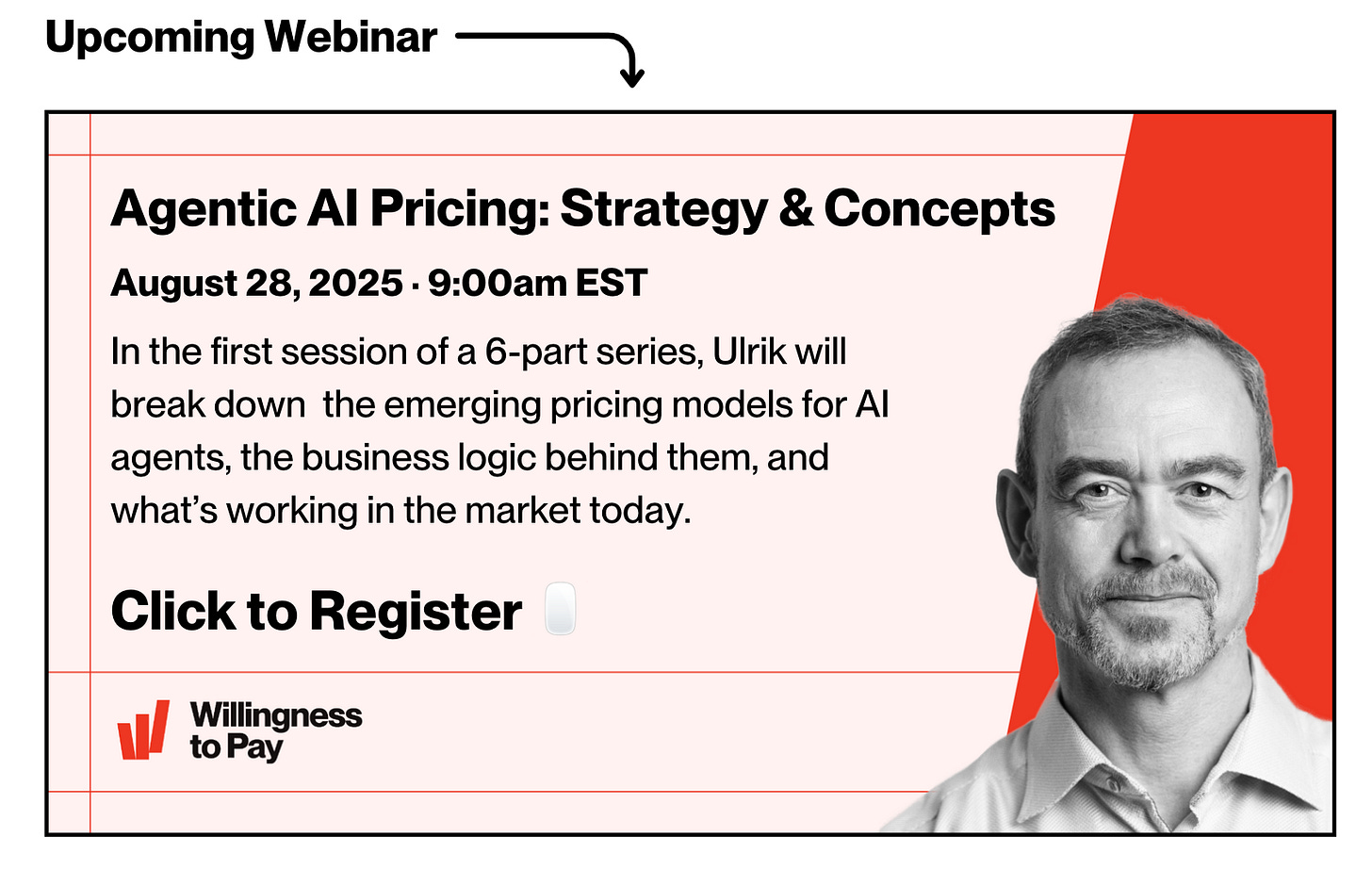What to do when your value metric becomes obsolete
Plus: Register for Ulrik's Agentic AI Pricing Webinar series.
Welcome back to Good Better Best!
Last month, I got the chance to chat with Colin Bowern, SVP of Product at Octopus Deploy, about one of the hardest things to do in SaaS pricing — changing your value metric. It was an awesome conversation, and Colin’s takeaways felt especially timely given how AI is disrupting traditional SaaS pricing models.
On to the full story after a quick word from our sponsor, Metronome.
What DataStax, Fly.io, and Starburst get right about pricing
Smart packaging is just one piece of getting pricing right. You’ve also got to have systems that are built for speed and scale. This blog post from Metronome breaks down five lessons from leading companies that modernized their pricing stack to support hybrid models, fast iteration, and real-time usage visibility.
Read the post to learn how DataStax, Fly.io, and Starburst turned billing into a growth accelerant.
When a core value metric becomes obsolete, it can be a make-or-break moment for SaaS companies.
For Octopus Deploy, a DevOps automation platform, the shift to cloud, containers, and serverless rendered their original per-server pricing irrelevant.
But this isn’t just a DevOps story.
It’s a preview of what’s coming for much of SaaS. In the next few years, the rise of AI will push companies toward agentic solutions and outcome-based pricing. That shift will make many of today’s most common value metrics (e.g., seats, storage, transactions) feel as outdated as “per server” does today.
The challenge will be the same one Octopus faced: identify a new metric that reflects value, is easy for customers to understand, and doesn’t create friction in adoption.
Octopus’ journey from servers to projects shows what it takes to make that leap. It’s a story of aligning price with value, preserving simplicity for self-service growth, and managing the inevitable turbulence of migrating thousands of existing customers.
I spoke with Octopus SVP of Product, Colin Bowern to get the full story of their pricing evolution, including the challenges they faced along the way, and how they arrived at their new pricing model.
The Death of the Server as a Pricing Anchor
For over a decade, Octopus priced on the number of servers a customer deployed to: a clear, intuitive measure of operational scale in the early 2010s.
“If you had a data center, you were probably pretty sophisticated. If you had a single server, you probably weren’t. It was a fair way to pin down the sense of scale for pricing back then.”
But the rise of cloud-native infrastructure broke that link. Serverless blurred the very concept of a server, Kubernetes abstracted workloads into amorphous clusters, and deployment targets no longer correlated with complexity or value.
By 2022, the server metric was actively distorting value capture. Large, sophisticated customers could run extensive operations on $700 licenses — barely covering their support volume, let alone the value Octopus provided.
Experiments in Pricing — and the Complexity Trap
The first instinct was to adapt the model. Octopus tried extending “per server” into “per target,” counting all deployable endpoints from VMs to containers.
Technically, it worked. Practically, it was a nightmare.
“We ended up with scripts you could run on your Kubernetes cluster that would spit out a magic number. Suddenly it felt like Oracle or Microsoft pricing, where you need a dedicated licensing specialist just to buy the product.”
This complexity slowed sales cycles and clashed with Octopus’ DNA. For a business that had grown to profitability through pure PLG, adding this much friction at the point of purchase was unacceptable.
Why Users and Usage-Based Pricing Didn’t Fit
With targets off the table, Octopus explored two popular alternatives: per-user and usage-based pricing.
Per-user pricing seemed simple, until they remembered how people use Octopus.
“We’re not a daily active use product like Salesforce. We’re partly automation, partly collaboration. People don’t think of Octopus as the tab they open every day.”
They also saw firsthand how per-user pricing had backfired elsewhere.
After acquiring a competitor that charged per developer, Octopus found customers using shared accounts or proxying information through developers rather than giving wider access. These workarounds reminded Colin of Salesforce, which doesn’t offer a read-only license, causing customers to search endlessly for workarounds.
Usage-based pricing had its own fatal flaw: it would actively discourage the very behavior Octopus wanted to encourage — more frequent deployments.
“Success with our product means you reduce the stress around deployment, so you do it more often. A usage model would send the wrong signal and be impossible for customers to forecast.”
The Breakthrough: Project-Based Pricing
The breakthrough came from looking at a neighboring part of the DevOps toolchain: code repositories. Asking “How many GitHub repos do you have?” or “How many projects are you running?” proved to be an easy, relatable question for both sales reps and customers.
“Projects became something a customer could quickly reason about. If I say ‘how many projects do you have,’ you can get in the ballpark without running a script or calling an engineer.”
In 2023, Octopus made the leap to project-based pricing. It was a measure customers could self-assess quickly, aligned with value delivered, and avoided the hidden complexity of infrastructure-based metrics.
Early results were encouraging: new logo sales cycles shortened, and prospects could grasp pricing without a consultant on the call.
Managing the Transition Without Burning Bridges
Changing the unit metric for thousands of accounts is never easy. Octopus approached the migration with pragmatism:
Grace periods for managed accounts to match budget cycles.
Extensions for customers needing extra runway.
Proactive outreach via email and sales access for any questions.
Predictably, some long-time customers voiced dissatisfaction. Most agreed that the value was clear. The real challenge was working through customer’s budget process and cycles. This is where account management is a real asset.
“It’s definitely showing up in our customer feedback channels. People love the product but the new model takes some adjustment. Change is hard. But the writing was on the wall, and the old pricing was never going to make sense.”
By April 2025, the bulk of migrations were complete. New customers “get it” instantly, and even most long-term customers have adjusted.
Safeguards and Secondary Metrics
Projects became the primary value metric, but Octopus added secondary thresholds to protect margins without discouraging use. These include:
Concurrent tasks for customers with high parallelism needs, like a nationwide car wash chain that must deploy to thousands of locations in a two-hour Sunday window.
Agents, which still connect loosely to the old server metric and encourage infrastructure cleanup.
Tenants, a unique Octopus feature for modeling multiple production environments, priced to reflect its differentiated value.
These thresholds give Octopus levers to handle outliers without penalizing everyday usage — a key reason sales cycles remain fast.
Conclusion
Octopus’ shift from per-server to project-based pricing is more than a niche infrastructure story: it’s a blueprint for the wave of pricing evolution coming to SaaS.
As AI reshapes products and workflows, traditional value metrics will erode. Features that once required daily human effort will be automated, breaking the link between old pricing anchors and actual customer value.
The winners will be companies that, like Octopus, move early to:
Kill outdated anchors before value leakage compounds.
Avoid complexity creep when designing replacements.
Align pricing with real success metrics — not just the easiest number to measure.
Layer in secondary thresholds to protect margins without killing adoption.
Manage transitions with transparency to preserve trust.
“In the end, you just have to decide what’s going to work for most people most of the time. And then commit to it.”
The AI era will force many SaaS operators to confront the same question Octopus did: Is our value metric still the best measure of what customers get from us? Those who answer it with clarity, and act decisively, will be positioned to thrive.
How we can help when you’re ready
PricingSaaS Community: Join the free PricingSaaS Community to get quick answers from experts, real-time pricing data, and access to exclusive events.
PricingSaaS Index: Check out the PricingSaaS Index to track competitors, scroll pricing histories, and create a swipe file of pricing pages for inspiration.
Free Advisory Session: Need a sounding board? Book a 30-minute session. No sales pitch. We’ll provide honest feedback and steer you in the right direction.






A wonderful real-world case that illustrates why three types of metric choices: price (how customers pay), usage (how much customer uses) and value (the economic impact) are so strategically important. For more on this topic see: https://edarnold1.substack.com/p/when-the-price-metric-is-not-right